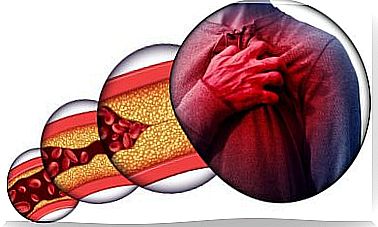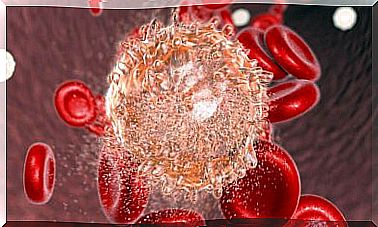Little Known Symptoms About Polycystic Ovary Syndrome (PCOS)
For some reason that is still not entirely clear, at any given time, a woman may begin to suffer a hormonal alteration that gradually triggers what we already know as polycystic ovary syndrome (PCOS).
This gynecological condition is also called Stein-Leventhal syndrome. We are facing a disorder that affects between 5 and 10% of women of reproductive age. In turn, it presents complex symptoms that can affect quality of life to varying degrees.
One of the most complex and delicate problems is the clear difficulty in getting pregnant. Likewise, it is common to have to undergo weight loss processes and the administration of oral contraceptives to regulate the hormonal problem associated with the polycystic ovary.
Today in our space we want to go a little deeper on the subject. And tell you especially about that secondary symptomatology, about those not-so-known clues that could alert us to this common disorder.
Symptoms associated with polycystic ovary syndrome
Before listing one by one those processes related to the presence of this hormonal alteration, it is necessary to understand that not because we have diabetes, suffer from obesity or have an irregular menstrual cycle, we are necessarily going to suffer from this disease.
- There must be a whole set of symptoms.
- In turn, many times we ourselves are the ones who intuit that something is “not right” in our body, that some aspect has changed.
- We want to say above all that we should not see these symptoms in isolation.
All, with greater or lesser incidence, can warn us of the presence of the polycystic ovary.
However, remember, to clear up doubts, nothing better than to visit the gynecologist to undergo some simple tests.
Insulin resistance
Insulin resistance or hyperinsulinemia is caused by a metabolic deficiency in which the body cannot use this hormone efficiently.
- When we suffer a hormonal alteration, it is common for insulin and its production in the pancreas to change.
- Little by little an excess of glucose is produced in our body, something that can irreparably lead to type 2 diabetes.
An excess of body hair
Hirsutism or excess body hair is undoubtedly one of the most common secondary symptoms of PCOS. This can appear in:
- Face (mustache area, sideburns, chin …)
- Neck
- Back
- Chest
- Buttocks
This hair growth follows a male pattern of distribution due to the excess of androgens that is produced in the female body. In the case of, for example , polycystic ovary syndrome.
It should be noted, however, that it may be due to many more factors. Our doctors will explain the cause to us.
Baldness or abnormal hair loss
Androgenic alopecia is a very evident fact associated with polycystic ovary syndrome. Once again, the cause is in this hormonal alteration. However, it must be said that with adequate pharmacological treatment we can stop this loss and regain the health of our hair.
Depression, anxiety, stress
One of the biggest problems that usually exist when diagnosing depression is the cause that triggered it.
- We cannot forget that many of our emotional problems often have a hormonal origin. A cause that can be easily treated with drug treatment.
- The hormonal alteration associated with polycystic ovary syndrome (PCOS) implies an entire internal decompensation.
- Due to hyperinsulinemia, an excess of cortisol is produced.
Cortisol is the hormone associated with stress. To that nervousness that grips us, that makes the smallest things accumulate, that we lose our calm. Little by little, this discomfort can lead us to a depressive state.
So remember. When you feel overwhelmed by your emotions, the first thing we will do is ask our doctor for a blood test to discover the state of our hormones.
High blood pressure and high cholesterol
The most complex aspect of polycystic ovary syndrome is that it can cause serious alterations in women, sometimes very young.
- We can have girls in their early 20s who suffer from overweight, diabetes, hypertension and high cholesterol.
- All these characteristics increase the risk of suffering heart attacks or strokes at a very young age.
- The metabolic changes associated with the hormonal alteration generates, for example, that the good cholesterol (HDL) diminishes and the bad one (LDL) rises.
- It is also common for triglycerides in the blood to increase. Getting that, little by little, our arteries lose elasticity and the dreaded arteriosclerosis is formed.
In conclusion. To the most obvious symptoms of polycystic ovary syndrome such as being overweight, irregular periods or difficulty in getting pregnant, we must add the list presented here.
It is necessary to always have an adequate diagnosis and a treatment adjusted to our needs. At the same time, we must also take care of our lifestyle habits at all times.
A healthy diet, exercise, reduce stress and undergo regular medical check-ups can help us improve our quality of life.
Main image courtesy of © wikiHow.com
Valeria Sabater
Graduated in Psychology from the University of Valencia in 2004. Master in Safety and Health at work in 2005 and Master in Mental System Management: neurocreativity, innovation and sixth sense in 2016 (University of Valencia). Collegiate number CV14913. He took the course Nutrition and obesity: overweight control, offered by the National Autonomous University of Mexico (UNAM). Student of Social and Cultural Anthropology at UNED, Valeria Sabater has worked in the area of social psychology selecting and training personnel. Since 2008, she has been a psychology and emotional intelligence trainer in secondary schools and offers psycho-pedagogical support to children with development and learning problems. In addition, she is a writer and has received various literary awards.









